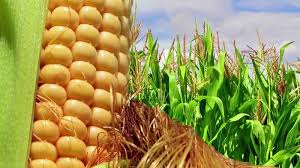The United Nations food agency reported on Thursday that world food prices rose for the second month in a row in September, reaching a 10-year high, owing to hikes in grains and vegetable oils.
The Rome-based Food and Agriculture Organization (FAO) forecasted record worldwide cereal production in 2021 but claimed it would be exceeded by expected demand.
According to FAO data, the food price index, which analyzes international prices of the most widely traded food items, averaged 130.0 points last month, the highest level since September 2011.
In August, the figure had been revised to 128.5. Previously, the August figure was provided as 127.4.
In September, prices were up 32.8 percent year over year.
Harvest losses and Chinese demand have fueled a sharp surge in agricultural commodity prices over the last year.
“Wheat will be the focus among main crops in the next weeks as demand must be tested against rapidly growing prices,” said FAO Senior Economist Abdolreza Abbassian in a statement.
In September, the FAO’s cereal price index increased by 2.0 percent over the previous month. Wheat prices increased by over 4%, owing to limited export availability amid robust demand, according to the UN agency.
World vegetable oil prices rose 1.7 percent month over month and by over 60% year over year, as palm oil prices rose on strong import demand and concerns about labor shortages in Malaysia, according to the FAO.
Palm oil futures have risen to new highs in early October, owing to a boom in crude oil markets, which has boosted demand for vegetable oils used in biodiesel.
According to the FAO, global sugar prices jumped 0.5 percent in September, primarily to concerns about bad crop weather in top exporters Brazil, which was partially offset by lower import demand and a favorable output forecast in India and Thailand.
In terms of cereal output, the FAO forecasted a world harvest of 2.800 billion tonnes in 2021, up from 2.788 billion a month ago.
In a cereal supply and demand report, FAO said that would be below world cereal usage of 2.811 billion tonnes, a forecast revised up by 2.7 million tonnes from a month earlier mostly due to increasing wheat use in animal feed.
Global cereal stocks are anticipated to decline in 2021/22, but remain at a safe level, according to FAO.

















